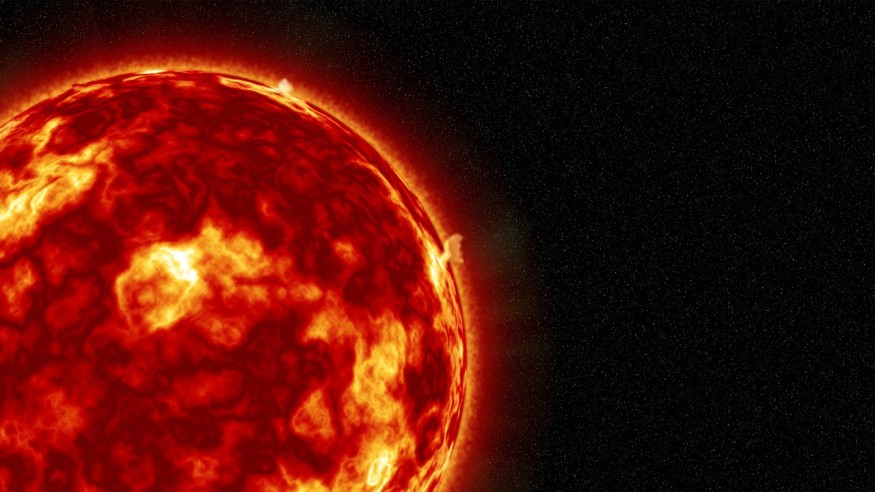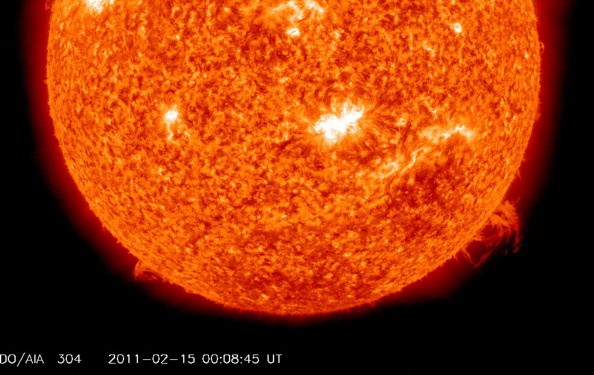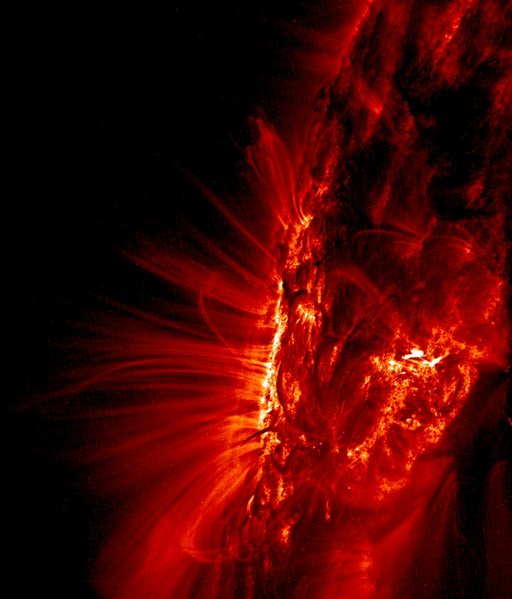A massive solar outburst might be on its way to Earth. According to Newsweek, astronomers have detected a large solar outburst but are unsure whether it is going towards Earth.

Detecting a Solar Eruption
The solar surface has seen some unusual activity in recent weeks. Sunspot AR3038, which was facing Earth and was supposed to die, has grown three times the size of the Earth. Astronomers have been anticipating solar outbursts from this sunspot.
Coronal Mass Ejection

A coronal mass ejection, or CME, has happened, which is significantly more powerful than a solar flare because it is densely packed with plasma and magnetic energy. The main problem is that the CME does not originate from Sunspot AR3038. Instead, astronomers have no idea where it originated from.
The explosion was detected on Sunday by Computer Aided CME Tracking, a CME detection software developed by the European Space Agency (ESA) (CACTus). The algorithm, according to the tool's website, operates autonomously. It uses data from the Large Angle and Spectrometric Coronagraph Experiment (LASCO), an ESA-NASA partnership, to study the Sun.
Because CACTus' list of CMEs is compiled automatically, astronomers utilize additional devices that look at the Sun to validate the occurrences. NASA's Solar Dynamics Observatory (SDO) is one such device that just provided photographs of sunspot AR3038.
Unfortunately, the data from SDO's equipment has been inaccessible due to a severe power outage at Stanford University. This has made it challenging to determine the precise position of the CME explosion and whether it is traveling toward Earth.
Unlike solar flares, which may produce brief radio blackouts, CMEs can cause widespread disruptions because the eruption's magnetic forces interact with the Earth's magnetic field.
Geomagnetic Storms

A geomagnetic storm triggered by a CME may bring down whole electrical networks and disrupt radio communication for days. High-energy CMEs can have a significant impact on navigation systems. Fortunately, severe storms are uncommon.
Solar flares move quickly; if directed at Earth, they arrive within minutes. A CME, on the other hand, can take days to reach Earth. According to experts, the explosion seen on the solar surface on Sunday might reach Earth by June 28th or 29th.
Studying the Sun
With the SDO no longer operational, astronomers must now rely on other coronograph-capable devices to evaluate if the eruption is threatening the Earth. The location of these instruments, for example, might have a major influence on the computations performed with them.
The only comfort astronomers today is that even if the CME was aimed toward Earth, it might not be powerful enough to wreak widespread devastation. However, it emphasizes the need to keep essential instruments operational, as you never know when a solar storm may strike.
In an Active Solar Cycle
The Sun is presently at an active period of its solar cycle; therefore, the less downtime we have, the more prepared we will be.
Related Article : Can We Survive a Catastrophic Solar Storm? What to do When a Solar Flare Hits Earth
For more cosmic news, don't forget to follow Nature World News!
© 2025 NatureWorldNews.com All rights reserved. Do not reproduce without permission.





